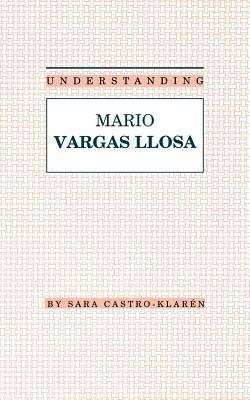
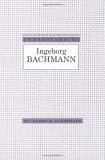
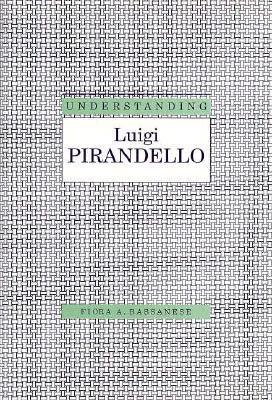
Understanding Modern European and Latin American Literature
Series · 44
books · 1988-2018
Books in series

#1
Understanding Mario Vargas Llosa
1990
Mario Vargas Llosa is considered one of the great Latin American writers of our time. Understanding Mario Vargas Llosa is a very readable companion guide to Llosa's works that traces the development of the novelist's craft and thought while probing and analyzing the entire body of writings to date of this celebrated author of The War of the End of the World. His popularity as a writer has been augmented recently as he has attracted international attention for his political involvement in Peru and his presidential campaign in the 1990 national elections. The book includes sections on the helix narrative, stories within stories, double and multiple time and space, cinema and narrative technique, fragmentation and coherence, fiction and history, the hero and society, the failed hero and the writing of fiction, autobiography and fiction, and the writer as hero.

#2
Understanding Ingeborg Bachmann
1994
Bachmann and her critique of postwar Europe
Understanding Ingeborg Bachmann introduces the Austrian writer regarded as one of postwar Europe's most innovative modernists to American readers. Karen Achberger surveys Bachmann's highly acclaimed poems, radio plays, opera librettos, short stories, and novels―an entire oeurve dedicated to the struggle against facism―in light of the writer's early life in war-ravaged Austria. Achberger describes the great irony of Bachmann's life and work in that, while she was received as a great writer during her lifetime, the political thrust of her work remained largely unrecognized until after her death in 1973.
Emphasizing the tragedy of the Germanic obsession with Bachmann's personal life rather than with her critique of postwar society, Achberger explores Bachmann's central themes of constant war and of woman's absence from patriarchal society. Comparing Bachmann's influence to that of Virginia Woolf in America, Achberger describes Bachmann's concern with gender-specific issues, which intensified as her career progressed. Achberger contends that beneath these themes lay Bachmann's tireless search for a new language and her utopian belief in writing on the brink of destruction.

#4
Understanding Luigi Pirandello
1997
In this introduction to the life and literary contributions of a Nobel Prize winner and one of Italy's most distinguished writers, Fiora A. Bassanese surveys the stories, novels, and plays of Luigi Pirandello and evaluates the significance of his influence on twentieth-century literature. She traces his artistic development from his early roots in Sicilian provincialism and positivist thought to his attainment of international fame as an innovative dramatist and thought-provoking narrator. Bassanese contends that his works helped to bring an end to nineteenth-century optimism. They transformed Italian theater and fiction by catapulting both into the modern era.
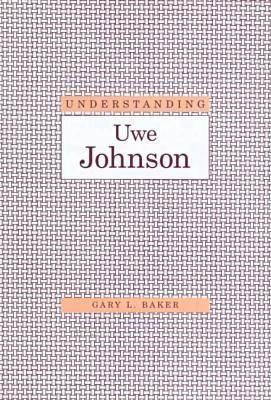
#5
Understanding Uwe Johnson
1999
Illuminates the fiction of one of postwar Germany's most provocative writers
One of the most important postwar German authors, Uwe Johnson is significant not only for his unique literary style and linguistic creativity but also for the thematic issues addressed in his works. He was the first German author to treat, in fiction, the division of Germany after the war. He explored its psychological, political, and cultural manifestations in a network of characters and places unmatched in complexity and authenticity.
Understanding Uwe Johnson provides a comprehensive overview of this author's work, concentrating on his five most important Ingrid Babendererde, Speculations about Jakob, The Third Book about Achim, Two Views, and Anniversaries, from the Life of Gesine Cresspahl. A chapter on Johnson's life relates his fiction to his scandalized existence in both Germanys, Great Britain, and the United States. Writing fiction was one of the ways Johnson came to terms with Germany's fascist past, cold war realities, his unwilling emigration from the former German Democratic Republic, and his unfulfilled desires for a democratic form of socialism. Especially noteworthy is the discussion of Johnson's theoretical ideas on writing novels and the importance of narratives in everyday life. Baker considers the extensive literature that has appeared about Johnson and his work, while providing new insights into novels that have become standard reading in German literature.
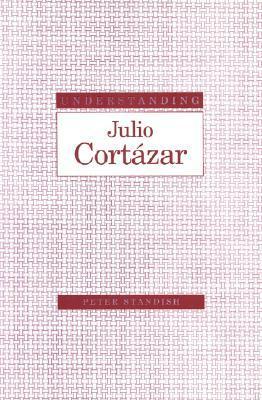
#6
Understanding Julio Cortázar
2001
Understanding Julio Cortázar, the first comprehensive discussion of his work to be published in English in a decade, recounts the varied literary achievements of one of Latin America's most acclaimed and prolific twentieth-century writers. Taking advantage of the perspective allowed by the time that has elapsed since Cortázar's death in 1984, Peter Standish reassesses the Argentinean's oeuvre, including his posthumous publications. There is considerable discussion of how Cortázar, a man whose controversial persona has often colored criticism of his work, handled the tension between aesthetic and political aims.
Standish offers a brief overview of Cortázar's life and a chronological synopsis of his works. Structuring his assessment around metaphors drawn from boxing (one of the writer's special passions), Standish considers Cortázar's plays, stories, novels, political and literary essays and interviews, textual accompaniments to the visual arts, and poetry. Through close readings Standish explores Cortázar's views on literary genres and the creative process. Standish also expounds upon the writer's prominent themes, including the metaphysical anguish of his protagonists as they search for otherness, fail to come to grips with the passage of time, and reject rational and conventional values.
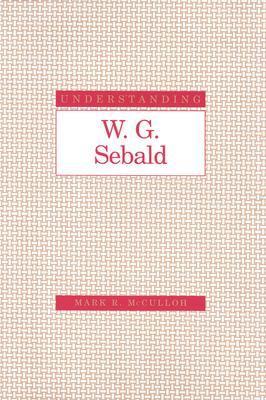
#7
Understanding W. G. Sebald
2003
A thorough dissection of Sebald's fiction and his recent acclaim
Understanding W. G. Sebald introduces readers to a novelist and poet regarded as one of the most original talents of the late twentieth century. A German writer who taught in England for thirty years, W. G. Sebald published four novels, first in German and then in English. These works― Vertigo, The Emigrants, The Rings of Saturn, and Austerlitz ―are unlike fiction as usually understood. Enthusiastically received by critics and general readers alike, Sebald's work gained even greater acclaim after his death in 2001, just months after the publication of Austerlitz.
In this companion to the writer's fiction, Mark R. McCulloh investigates the reasons for Sebald's almost universal appeal. He also explores the themes, issues, and influences that dominate the writer's oeuvre. Suggesting that Sebald essentially had two literary careers―as his works appeared in German-speaking Europe and then as they appeared in the English-speaking world―McCulloh outlines the writer's reception in his homeland and in translation. McCulloh illumines the vast knowledge of European literatures that Sebald drew upon in composing his recursive and allusive narratives. He also sheds light on the interconnections that lurk beneath the surface of the writer's haunting landscapes and poignant memoirs.
McCulloh examines Sebald's syncretic style, a unique kind of "literary monism" that includes elements of memoir, cultural critique, literary history, meditation, travelogue, biography, autobiography, and even crime story. Sebald's holistic approach, according to McCulloh, points to an overarching "spatial" concept of time in which all events―past, present, and future―exist simultaneously. In addition, McCulloh discusses the writer's other thematic concerns, including the elusiveness of identity, the effects of exile, the destructive forces of history, the power of love, and the nature of the creative process itself.
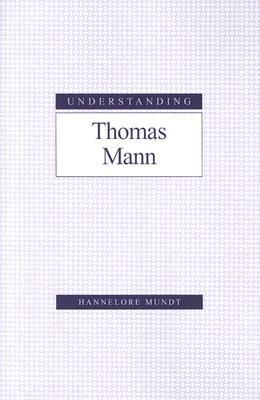
#8
Understanding Thomas Mann
2004
A comprehensive guide and a discussion of the relevance of Mann's distinctive voice for a pluralistic world
Understanding Thomas Mann offers a comprehensive guide to the novels, short stories, novellas, and nonfiction of one of the most renowned and prolific German writers. In addition to analyzing Mann's most famous works, including Buddenbrooks, Death in Venice, The Magic Mountain, and Doctor Faustus, Hannelore Mundt introduces readers to lesser-known works, among them Joseph and His Brothers, Lotte in Weimar, and The Black Swan. In close readings, Mundt illustrates how Mann's masterly prose captures both his time and the complexities of human existence with a unique blend of humor, compassion, irony, and ambiguity.
Mundt takes readers chronologically from Mann's literary beginnings in 1894 to his last novel, Confessions of Felix Krull, Confidence Man. She considers the influence of Arthur Schopenhauer and Friedrich Nietzsche on the emergence of Mann's literary voice, his conflicted feelings about his bourgeois background, and his life as Germany's representative writer in the Weimar Republic and in exile. Mundt places Mann's works in the realistic and modern traditions and discusses his recurring thematic concerns―the individual's rebellion against oppressive bourgeois conventions and antihumanistic principles, the need for an unremitting questioning of authority and ostensibly absolute truths, and the antagonism between individualistic freedom and social responsibility. In light of the recent publication of Mann's diaries, disclosing his homosexual inclinations, Mundt also identifies the textual strategies he adopted for revealing and simultaneously masking his secret sexuality.
Mann emerges from Mundt's analysis as a writer who plays with opposing perspectives in his fictional renderings of both the alienated individual and Germany's cultural and political history. Mundt suggests that the openness of his works, paired with his deep insights into human existence, explains his stature as a literary figure whose importance extends worldwide.
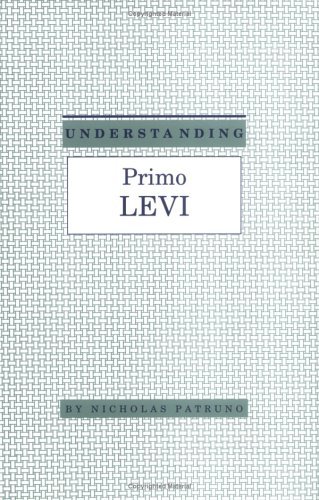
#9
Understanding Primo Levi
1995
Levi, an Italian Jew who completed university training as the Nazis came to power, survived the atrocities of concentration camps and wrote extensively of his experiences. Patruno (Italian, Bryn Mawr College) analyzes Levi's novels, short stories, and essays to reveal a writer who never came to term
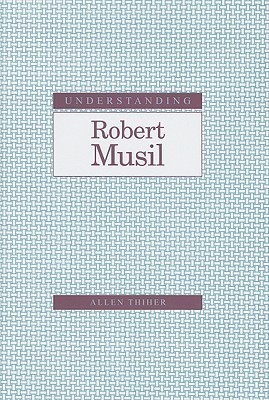
#10
Understanding Robert Musil
2009
Deft analysis of the fiction, theater, and essays of the author of The Man without Qualities
In this critical introduction to the major works of Austrian modernist writer Robert Musil (1880–1942), Allen Thiher offers deft analysis of Musil's short fiction, theater, and essays, and his major novel, The Man without Qualities.
Thiher maps Musil's development as a writer, illustrating how his work evolved in response to catastrophic historical events such as World War I, the collapse of the Austro-Hungarian Empire, and Hitler's seizure of power. From this historical context, Thiher traces how Musil began his career by writing a prescient first novel about ideological developments in German culture and, at the same time, a doctoral thesis on scientific epistemology. Following his service in World War I, Musil began to view writing as his vocation and, during this early period in his literary career, he produced short fiction, plays, and some of the most interesting essays on politics, ethics, and literature to be published during the Weimar era. In exploring these writings as well as The Man without Qualities, a work left unfinished upon Musil's death in exile during World War II, Thiher's study plumbs the depths of Musil's ambition and accomplishments and presents a concise interpretation of the lasting significance of the writer's interrogations of the foundations of modern European culture.

#11
Understanding Samuel Beckett
1990
Understanding Samuel Becket t presents an overview of the work of the Irish author whose most famous novels and plays―M olloy, Malone Dies, The Unnamable, Waiting for Godot, and Endgame ―are discussed in depth, alongside some less known earlier texts and later, shorter pieces. Alan Astro pays particular attention to Beckett's relationship with other authors (Dante, Joyce, Proust), his debt to philosophers (Sartre, Descartes, Pascal), his bilingualism, the psychoanalytic texture of his writing, and his manipulation of the first-person pronoun. Readers will see how Beckett's characters who wish to narrate their own deaths incorporate silence into their speech. Astro concludes with a discussion of Stirrings Still, Beckett's last text, in which he evokes his own impending demise.
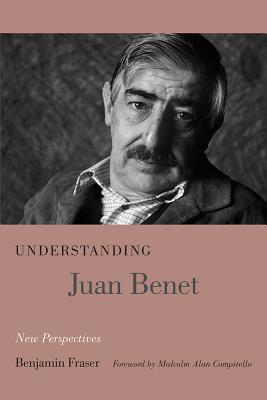
#12
Understanding Juan Benet
New Perspectives
2013
Benjamin Fraser offers an engaging interdisciplinary approach to understanding the literary achievements of Spanish writer Juan Benet (1927-1993) that explores how Benet's intertwined perspectives as author and civil engineer collectively shape his worldview. Benet's intellectual range spanned not only novels, plays, short stories, and essays but also incorporated dams, bridges, canals, and other public works. Fraser offers a fresh vantage point on Benet's writing as invested in both literary and concrete landscapes.
Fraser begins his study by grounding readers of Benet's work in the fundamental importance of understanding the Spanish Civil War. Subsequent chapters offer new perspectives on Benet's literary and essayistic production, first viewing Benet's work through the lens of his profession as a civil engineer and exploring lesser known engineering texts and essays in relation to his creative and literary vision, then mapping the influence of French philosopher Henri Bergson (1859-1941) on the Spanish writer's oeuvre. Fraser also harnesses the development of cultural geography and spatial theory to explore the roles of place and space in Benet's novels―highlighting in particular the elaborate spatial dimensions of Benet's own invented cartography of the novelistic place he called "Región."
Understanding Juan Benet ventures beyond traditional literary study, pursuing the interdisciplinary conversations central to Benet's creative work in which history, fiction, engineering, philosophy, and cultural geography all interact. This introduction to Benet's writing also includes a foreword by Malcolm Alan Compitello, professor of Spanish and head of the Department of Spanish and Portuguese at the University of Arizona, author of Ordering the Volverás a Región and Civil War Fiction and coeditor of Critical Approaches to the Writing of Juan Benet.

#13
Understanding Marcel Proust
2013
Understanding Marcel Proust includes an overview of Marcel Proust's development as a writer, addressing both works published and unpublished in his lifetime, and then offers an in-depth interpretation of Proust's major novel, In Search of Lost Time, relating it to the Western literary tradition while also demonstrating its radical newness as a narrative.
In his introduction Allen Thiher outlines Proust's development in the context of the political and artistic life of the Third Republic, arguing that everything Proust wrote before In Search of Lost Time was an experiment in sorting out whether he wanted to be a writer of critical theory or of fiction. Ultimately, Thiher observes, all these experiments had a role in the elaboration of the novel. Proust became both theorist and fiction writer by creating a bildungsroman narrating a writer's education.
What is perhaps most original about Thiher's interpretation, however, is his demonstration that Proust removed his aged narrator from the novel's temporal flow to achieve a kind of fictional transcendence. Proust never situates his narrator in historical time, which allows him to demonstrate concretely what he sees as the function of the truth of the absolute particular removed from time's determinations. The artist that the narrator hopes to become at the end of the novel must pursue his own individual truths―those in fact that the novel has narrated, for him and the reader, up to the novel's conclusion.
Written in a language accessible to upper-level undergraduates as well as literate general readers, Understanding Marcel Proust simultaneously addresses a scholarly public aware of the critical arguments that Proust's work has generated. Thiher's study should make Proust's In Search of Lost Time more widely accessible by explicating its structure and themes.

#14
Understanding Contemporary Irish Fiction and Drama
2016
In Understanding Contemporary Irish Fiction and Drama, Margaret Hallissy examines the work of a cross-section of important Irish writers of the late twentieth and early twenty-first centuries who are representative of essential issues and themes in the canon of contemporary Irish literature. Included are early figures John Millington Synge and James Joyce; dramatists Brian Friel, Conor McPherson, and Tom Murphy; and prize-winning contemporary fiction writers such as Edna O'Brien, Joseph O'Connor, William Trevor, Roddy Doyle, and Colum McCann.
Each chapter focuses on one significant representative piece of contemporary Irish fiction or drama by filling in its cultural, historical, and literary background. Hallissy identifies a key theme or key event in the Irish past essential to understanding the work. She then analyzes earlier literary compositions with the same theme and through a close reading of the contemporary work provides context for that background. The chapters are organized chronologically by relevant historical events, with thematic discussions interspersed. Background pieces were chosen for their places in Irish literature and the additional insight they provide into the featured works.
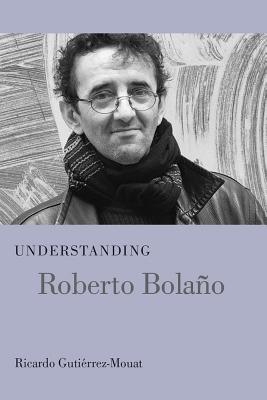
#15
Understanding Roberto Bolano
2016
In Understanding Roberto Bolano, Ricardo Gutierrez-Mouat offers a comprehensive analysis of this critically acclaimed Chilean poet and novelist whose work brought global attention to Latin American literature in the 1960s unseen since the rise of Garcia Marquez and magic realism. Best known for The Savage Detectives, winner of the Romulo Gallegos Prize; the novella By Night in Chile; and the posthumously published novel 2666, winner of the National Book Critics Circle Award, Bolano died in 2003 just as his reputation was becoming established.
After a brief biographical sketch, Gutierrez-Mouat chronologically contextualizes literary interpretations of Bolano's work in terms of his life, cultural background, and political ideals. Gutierrez-Mouat explains Bolano's work to an English-speaking audience—including his relatively neglected poetry—and conveys a sense of where Bolano fits in the Latin American tradition. Since his death, eleven of novels, four short story collections, and three poetry collections have been translated into English.
The afterword addresses Bolano's status as a Latin American writer, as the former literary editor of El Pais claimed, "neither magical realist, nor baroque nor localist, but \[creator of\] an imaginary, extraterritorial mirror of Latin America, more as a kind of state of mind than a specific place."
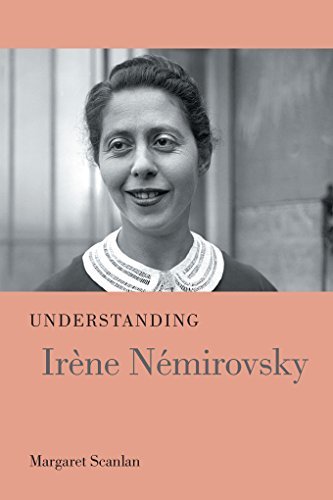
#17
Understanding Irène Némirovsky
2018
A sympathetic, nuanced exploration of the fiction and turbulent life of this best-selling author
A best-selling novelist in the 1930s, Irène Némirovsky (1903-1942) was rediscovered in 2004, when her Suite Française, set during the fall of France and the first year of German occupation, became a popular and critical success both in France and in the United States. Surviving in manuscript for sixty years after the author's deportation to Auschwitz, the work drew respectful attention as the voice of an early Holocaust victim. However, as remaining portions of Némirovsky's oeuvre returned to print, many twenty-first-century readers were appalled. Works such as David Golder and The Ball were condemned as crudely anti-Semitic, and when biographical details such as her 1938 conversion to Catholicism became known, hostility toward this "self-hating" Jew deepened.
Countering such criticisms, Understanding Irène Némirovsky offers a sympathetic, nuanced reading of Némirovsky's fiction. Margaret Scanlan begins with an overview of the writer's life—her upper-class Russian childhood, her family's immigration to France, her troubled relationship with her neglectful mother—and then traces how such experiences informed her novels and stories, including works set in revolutionary Russia, among the nouveau riche on the Riviera, and in struggling French families and failing businesses during the Depression. Scanlan examines the Suite Française and other works that address the rise of fascism and anti-Semitism. Viewing Némirovsky as a major talent with a distinctive style and voice, Scanlan argues for Némirovsky's keen awareness of the unsettled times in which she lived and examines the ways in which even her novels of manners analyze larger social issues.
Scanlan shows how Némirovsky identified with France as the center of culture and Enlightenment values, a nation where a thoughtful artist could choose her own identity. The Russian Revolution had convinced Némirovsky that violent liberations led to further violence and repression, that interior freedom required political stability. In 1940, when French democracy had collapsed and many seemed reconciled to the Vichy state, Némirovsky's idea of private freedom faltered—a recognition that her last work, Suite Française, for all its seeming reticence, makes poignantly clear.
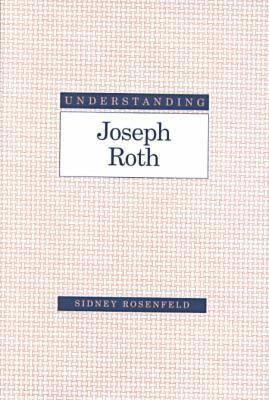
#18
Understanding Joseph Roth
2001
Rosenfeld examines Roth's obsession with the question of belonging, tracing it to his boyhood in the Slavic-Jewish Austrian Crown land of Galicia. Illustrating how Roth's quest determined his most typical themes and gave rise to the Jewish-Slavic melancholy that permeates his narratives, Rosenfeld includes readings of the early novels. Through this fiction Roth quickly established his reputation as a literary chronicler of both the final years of the Habsburg monarchy and the lost world of East European Jewry. Rosenfeld describes Roth's flight from Berlin upon Hitler's ascent to power in January 1933, and his precarious existence as an exile. While copies of Roth's works went up in flames in Nazi book burnings, the novelist moved from one European city to another, living in hotels and writing at café tables. From the time of his exile until his death in Paris just months before the outbreak of the Second World War, Roth produced six novels, as well as shorter works of fiction and a steady flow of journalism denouncing the Third Reich. Rosenfeld's critical readings of the novels written during Roth's exile connect them with the novelist's prescient estimate of Hitler's intentions and his own longing for a sovereign Austria.
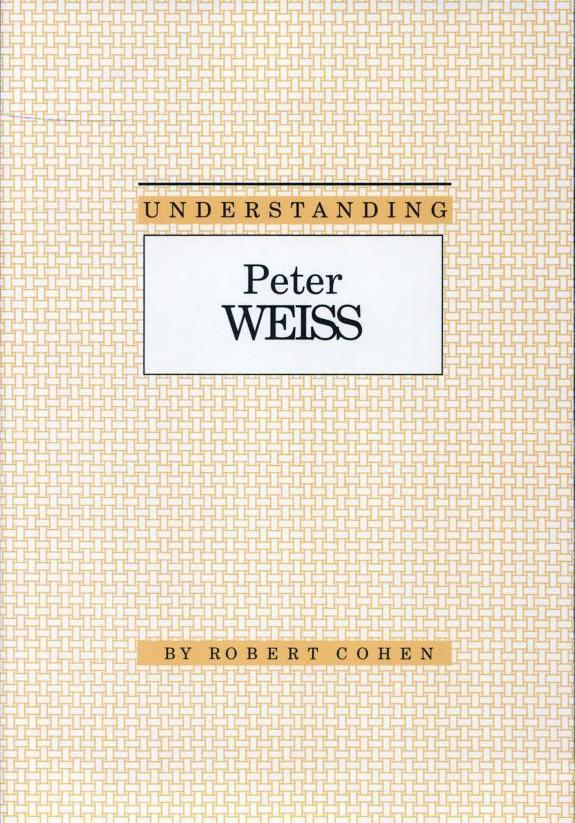
#19
Understanding Peter Weiss
1993
English (translation)
Original German

#20
Understanding Günter Grass
1988
Book by Keele, Alan Frank
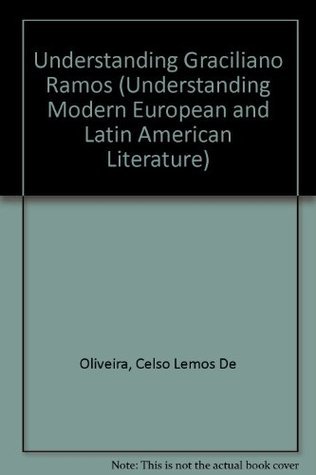
#21
Understanding Graciliano Ramos
1988
Book by de Oliveira, Celso Lemos
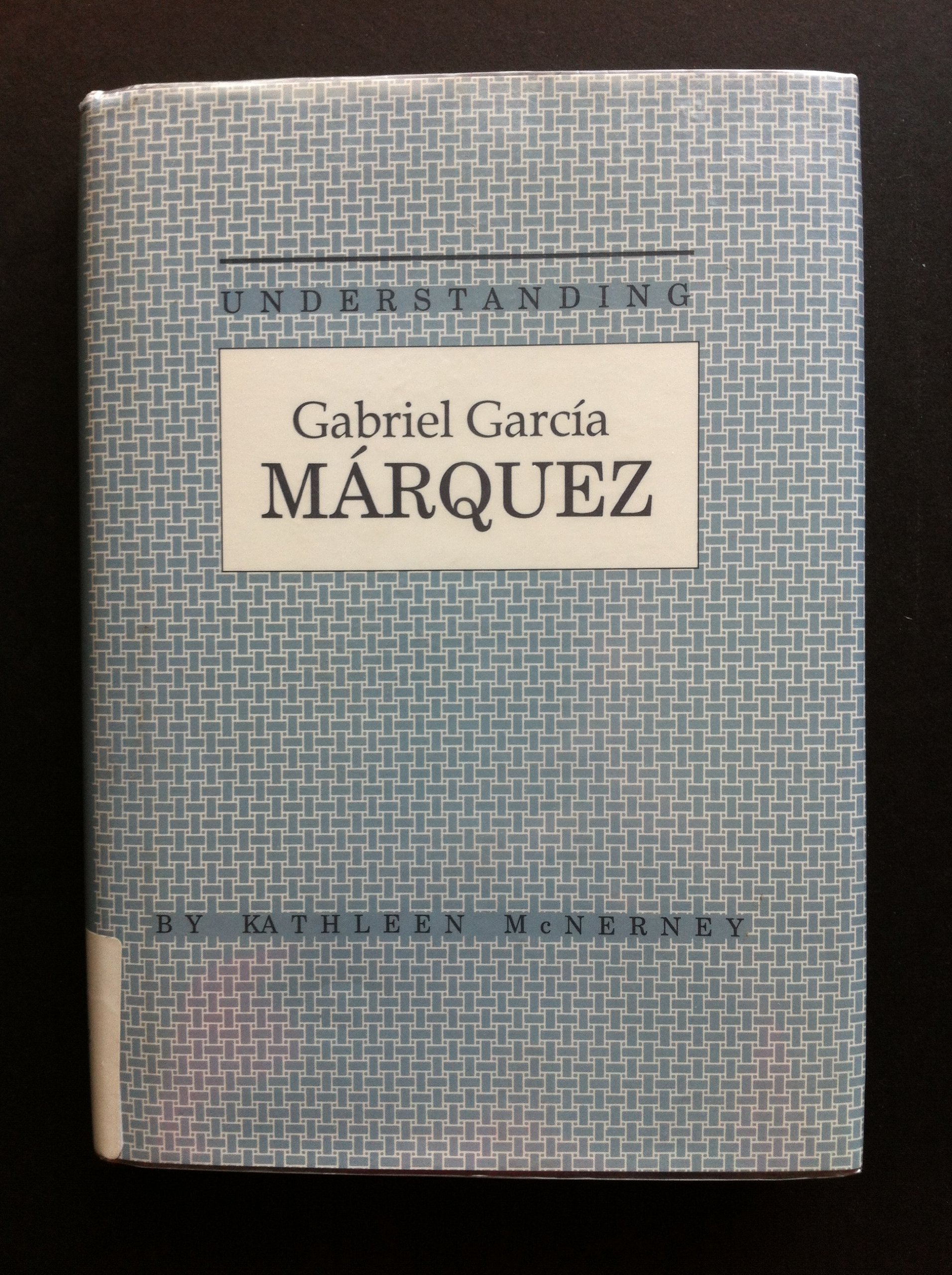
#22
Understanding Gabriel Garcia Marquez
1989
A guide to understanding the works of Marquez for students as well as initiated nonspecialists in literature. It will be especially useful for American readers since an effort has been made to acquaint them with the society out of which the writer comes and which he describes in his work. 5x7. Paper edition, $10.95 (unseen). Annotation copyright Book News, Inc. Portland, Or.
#23
Understanding Federico Garcia Lorca
1995
Arguably the most significant literary figure of twentieth-century Spain, Federico Garcia Lorca was an accomplished poet, playwright, lecturer, musician, and theater director. With the exception of Cervantes, no other Spanish writer has attracted more critical attention than this versatile artist. In Understanding Federico Garcia Lorca, Candelas Newton explores Lorca's literary contributions through a critical reading of his work and an explanation of the images and symbols he relied upon to manifest his primary themes.
#24
Understanding Claude Simon
1990
Provides an introduction to the most important novels of the 1985 Nobel Prize winner, and assesses Simon's place in French literature
#25
Understanding Jean-Paul Sartre
1991
Book by Wood, Philip R.
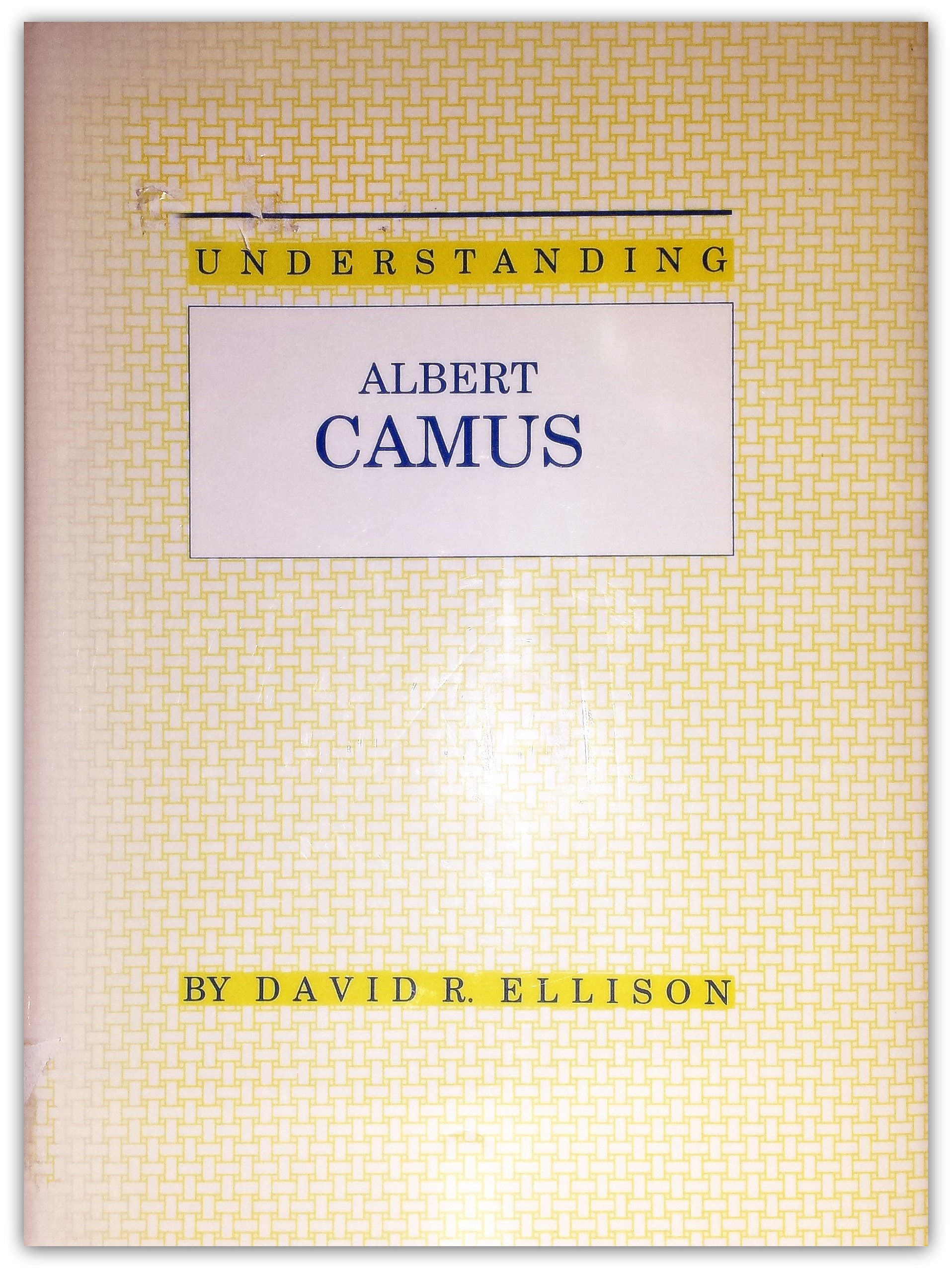
#26
Understanding Albert Camus
1990
Book by Ellison, David R.
#27
Understanding Max Frisch
1990
Book by Koepke, Wulf
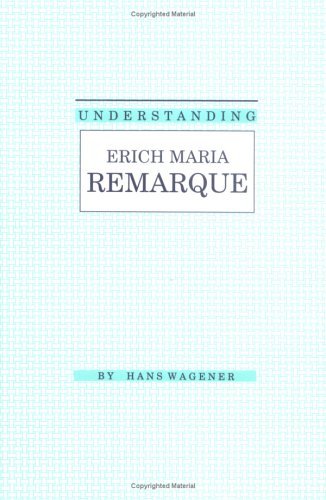
#28
Understanding Erich Maria Remarque
1991
Book by Wagener, Hans
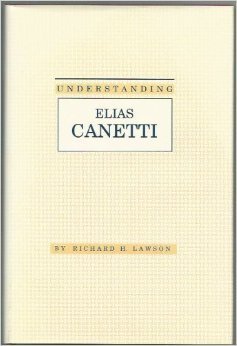
#29
Understanding Elias Canetti
1991
Understanding Elias Canetti - Richard H. Lawson

#30
Understanding Thomas Bernhard
1991
Book by Dowden, Stephen D.
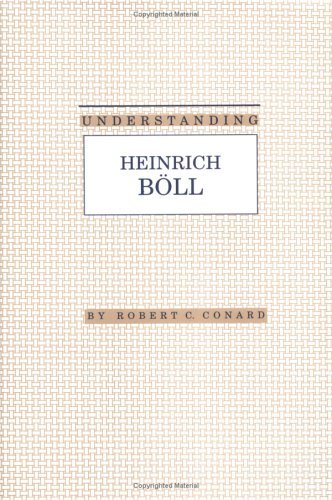
#31
Understanding Heinrich Böll
1992
Book by Conard, Robert C.
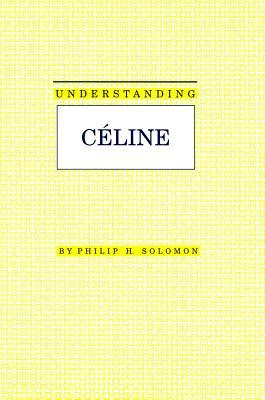
#32
Understanding Celine
1992
Solomon examines the principal themes and structures of the novels of French writer Louis Ferdinand Céline, taking into account his theatre, anti-Semitic pamphlets, and critical works. A biographical introduction and a chronology note the historical and private events that shaped the writer's life and influenced his development as a writer. An overview of Céline's writings explores the author's vision of the human condition and his perception of the redemptive value of the work of art by which the disorder of life is resolved by the order of writing. Emphasis is placed on the self-reflective nature of Céline's fiction, particularly on the function of the mythologized head wound to express the transition between autobiography and fiction.
Each of the volume's principal characters is devoted to an individual novel or closely related group of novels, considered in chronological order. A brief plot summary and indication of the work's particular relevance for the reader precedes the analysis of the text. Each work, from Journey to the End of the Night to Rigadoon, is considered not only with respect to its intrinsic interest but also in terms of its describing a phase in the apprenticeship of life that Céline's picaresque protagonist undergoes as he is progressively stripped of his illusions and comes to resemble the narrator more closely.

#33
Understanding Gerhart Hauptmann
1992
Book by Maurer, Warren R.
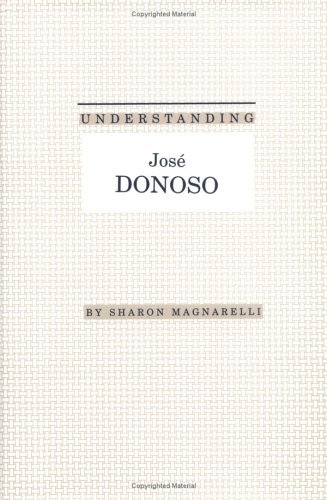
#34
Understanding Jose Donoso
1992
Chilean writer José Donoso is one of a handful of authors inevitably mentioned in relationship to the "boom" in Spanish American literature during the 1960s and 1970s. His name is frequently linked with those of other Latin writers such as García Márquez, Vargas Llosa, Fuentes, Rulfo, and Cortázar. Like his contemporaries, Donoso blends the physical and the psychological in his fiction. The perceptions of his characters are constantly changing. For Donoso, "reality" is a state of mind always subject to the imagination, and nothing is stable.
In this volume, Magnarelli provides a comprehensive study of Donoso's major works which have been translated into English. These include Coronation, Hell Has No Limits, This Sunday, The Obscene Bird of Night, A House in the Country, Sacred Families (a collection of three short novels), and Charleston and Other Stories (a volume of short stories). The close readings of Understanding José Donoso explicate the individual texts, yet the critic never loses sight of the broader context of Latin American and Western culture, civilization, and thought. Magnarelli continually draws the reader's attention to the interrelations among the works and places those works within the framework of other Latin American writing, recent sociopolitical events in Latin America, and contemporary trends in Western literature and ideas. As she traces the development of Donoso's major themes and motifs from his early short stories to his recent Curfew, Magnarelli highlights Donoso's recurrent issues of mask, power, and perception.
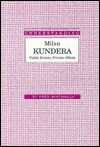
#35
Understanding Milan Kundera
Public Events, Private Affairs
1993
Book by Misurella, Fred
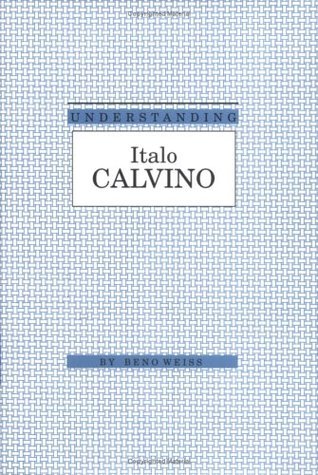
#36
Understanding Italo Calvino
1993
Weiss highlights Calvino's fascination with folk tales, knights, social and political allegories, and science fiction. He emphasizes Calvino's effort to redefine writing and reality and his penchant for the spectrum of narrative theories including semiotics, structuralism, post-modernism, and post-structuralism. Calvino frequently broke stride with fashionable literary movements, as with the publication of his trilogy The Cloven Viscount, The Baron in the Trees, and The Nonexistent Knight and such later works as Invisible Cities, If on a winter's night a traveller, and Mr. Palomar. Weiss evaluates the early experiences—exposure to his parents' botany careers, participation in the Italian Resistance during World War II, an extended residence in Paris—that influenced this very private man. Through careful reading of Calvino's fiction and literary essays, Weiss identifies a quest to defy the malaise of life in a dehumanizing world and a desire to gain a cosmic sense of harmony as the driving forces behind Calvino's work.

#37
Understanding Franz Werfel
1993
Understanding Franz Werfel describes the life and work of the Austrian poet and novelist who heralded the German Expressionist movement in 1911, wrote some of Europe's most widely read novels in the 1930s, and enjoyed popular success in the 1940s with the film adaptations of his best-selling novels. Hans Wagener recounts Werfel's childhood in Prague, his service as a World War I soldier, his work as a writer in Vienna where he met and married Alma Mahler, his exile in France, and his final years in the United States.
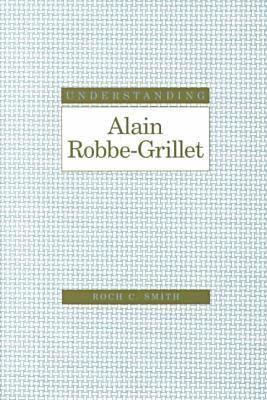
#38
Understanding Alain Robbe-Grillet (Understanding Modern European and Latin American Literature)
2000
Acquaints readers with the complex, unique, and experimental nature of this author
Emerging early in the 1950s as an articulate and provocative spokesman for the "new novel," Alain Robbe-Grillet has remained one of the world's leading practitioners of experimental narrative. He continues to reinvent the genre in ways that challenge the conventions of traditional realism, much of the time bewildering readers and critics with his subversion of narrative structure and of such staples of traditional fiction as character, plot, and chronology. In this introduction to the French writer whose work includes Eraser, Recollections of the Golden Triangle, and Ghosts in the Mirror, Roch C. Smith suggests that despite the initial shock often felt on a first encounter with Robbe-Grillet, reading his work can be great fun for someone willing to tolerate defamiliarization and ambiguity and to become an interactive traveler through his narrative mazes. With this exploration of Robbe-Grillet's novels, short stories, and autobiographies, Smith offers a guide for the adventuresome reader to the writer's labyrinthine and playful world.
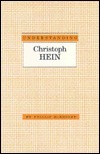
#39
Understanding Christoph Hein
1994
Book by McKnight, Philip S.

#40
Understanding Isak Dinesen
2002
Susan C. Brantly's introduction to the writings of Isak Dinesen elucidates the subtle complexities of a Scandinavian writer whose works have attracted a large, passionate following in her homeland, throughout the world, and especially in the United States. Highly regarded by a generation that followed her televised trip to America in the 1950s and by a later generation mesmerized by the Oscar-winning 1985 film Out of Africa, Dinesen gained her initial literary success in the United States. Brantly suggests that despite Dinesen’s wide appeal, her irony, allusiveness, obliquity, and mystery elude many readers, depriving them of a full appreciation of the writer's artistry. In this guide Brantly illumines the easily missed literary references, cultural kaleidoscope, and other complexities that enrich not only Dinesen's fictional works but also the memoir she wrote of her time in Kenya. Brantly addresses the ambiguous qualities of Dinesen's life and literature that have caused critics to disagree on fundamental points of interpretation, examines her ties to English Gothic, German Romanticism, and other nineteenth-century trends, and considers her work within the contexts of modernism and postmodernism. Brantly reveals the thought and care that Dinesen devoted to the construction of her stories, her expansive knowledge of world literature, and the great pleasure awaiting readers as they unravel the mysteries embedded in her texts.
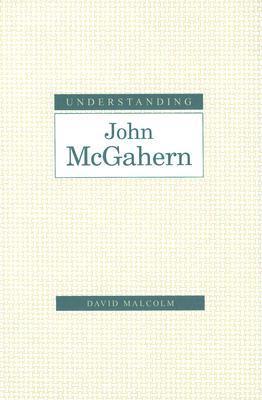
#41
Understanding John McGahern
2007
Understanding John McGahern surveys the life and work of the successful Irish novelist and short story writer whose career was launched with the 1963 publication of The Barracks. Most widely known for the 1998 film adaptation of Amongst Women, McGahern (1934-2006) has been enthusiastically received internationally and particularly in France, where some of the best and most extensive scholarship on his work has taken place. In this introduction to the writer and his body of work, David Malcolm identifies McGahern's primary concerns and assesses his popularity beyond the shores of Ireland. Although McGahern has long been categorized as a writer who specializes in the despair afflicting the Irish, Malcolm takes a broader view, showing how the novelist writes about individual fates that resonate with universal existential concerns.
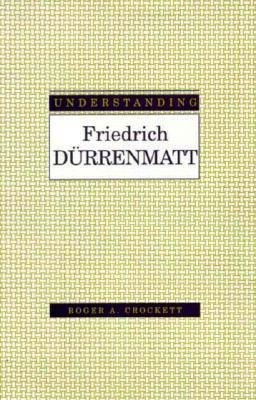
#42
Understanding Friedrich Durrenmatt
1998
Roger A. Crockett's comprehensive overview of Friedrich Durrenmatt's dramatic and narrative oeuvre reveals the international importance of one of Switzerland's most talented and scandalous playwrights. Durrenmatt gained fame beyond the Swiss borders in the early 1950s with the serialized detective novel The Judge and His Hangman and a series of radio dramas. His worldwide acclaim, however, rests largely on two dramas that have been canonized and anthologized as 20th-century classics of the world The Visit (1956) and The Physicist (1962).
#44
Understanding Hermann Hesse
The Man, His Myth, His Metaphor
1998
Written for the new generation of students and general readers now discovering the novelist, Understanding Hermann Hesse unravels the stylistic mysteries that traditionally have complicated interpretation of the noted German writer. Tusken clarifies the web of structural patterns that distinguish the Hesse canon; he also reveals the timelessness of the writer's thematic concerns and the timeliness - given the religious experimentation of the current age - of his spiritual quest. Making the case that Hesse deserves renewed, more thoughtful attention from critics and scholars, Tusken identifies the themes that tie seemingly disparate novels together. He sheds light on often overlooked nuances of duality motifs and image-metaphor variations that characterize Hesse's progressive thematic continuum. In addition, Tusken focuses on the importance of a biographical approach in understanding this self-proclaimed confessional writer. Recounting major events in Hesse's life, Tusken appraises their effect on the novelist's search for self and for the meaning of human existence.
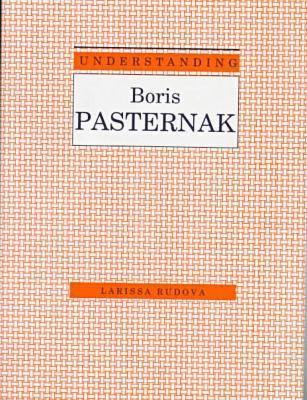
#45
Understanding Boris Pasternak
1997
Book by Rudova, Larissa

#46
Understanding Johannes Bobrowski
1995
In this critical introduction to the poetry and fiction of Johannes Bobrowski (1917-1965), David Scrase elucidates the literary subtleties of one of the most prominent writers to live and work in the German Democratic Republic. Despite the fact that Bobrowski won such prestigious accolades as the Heinrich Mann Prize and Charles Veillon Prize and held an important position in the literature of postwar Germany, very little English-language scholarship has been published about his work. Scrase fills this gap by exploring the heralded writer's novels, poems, and short stories.
Contending that Bobrowski's writing can be understood only by those who appreciate the ethos that pervaded East Prussia during the writer's childhood, Scrase begins by reviewing the region's history and profiling the diverse ethnic and religious communities that Bobrowski encountered there.
In looking at a representative sampling of Bobrowski's work, Scrase exposes the writer's attempts to come to terms with Germany's destructive role in eastern Europe. Scrase offers close readings of selected Bobrowski poems, most of which depict the landscape of Sarmatia, its rural traditions, and the daily tasks of its people. He also reviews Bobrowski's two novels, Levin's Mill and Lithuanian Pianos, and explains how to read Bobrowski's short stories.
#47
Understanding Eugene Ionesco
1994
Book by Lane, Nancy
Authors
Richard H. Lawson
Author · 1 book
Dr. Lawson has authored several books in the Literature and Life: World Writers series, as well as numerous articles on German literature and Germanic linguistics. A native Californian, he is (as of 1987) professor emeritus of German, University of North Carolina at Chapel Hill, where he was editor of the UNC Studies in Germanic Languages and Literatures.
Robert Cohen
Author · 1 book
Librarian note: There is more than one author in the GoodReads database with this name

Sara Castro-Klarén
Author · 1 book
Sara Castro-Klarén is Professor of Latin American Culture and Literature at The Johns Hopkins University. Her fields of specialization are the Modern Latin American Novel, Literary and Cultural Theory and Colonial Studies. She received her Ph.D. in Hispanic Languages and Literatures from the University of California in Los Angeles in 1968. She taught at Dartmouth College (1970-83) and chaired the Department of Spanish and Portuguese (1979-82). She was the Chief of the Hispanic Division of the Library of Congress for three years and joined the Hopkins faculty in the Spring of 1987. She has been the recipient of several teaching awards. Most recently the Foreign Service Institute conferred upon her the title of "Distinguished Visiting Lecturer" (1993). She was appointed to the Fulbright Board of Directors by President Clinton in 1999. Her research and publications have been sustained by a combined interest in anthropology, literature and theory. Her publications include El mundo magico de Jose Maria Arguedas (1973), Understanding Mario Vargas Llosa (1990) and Escritura, Sujeto y transgresion en la Literature latinoamericana (1989), along with Latin American Women Writers (1991), ed. with Sylvia Molloy and Beatriz Sarlo. More recently she has published many chapters in collections dealing with her current book length projects: subaltern subjects and the representation of cannibalism.
Nancy Lane
Author · 1 book
Nancy Lane has been an award-winning illustrator for the last twenty years. Her picture books include "Call the Horse Lucky" and "A Home for Dakota" (both from The Gryphon Press). She lives in the Finger Lakes region of upstate New York with her family and her rescued dog and cats.
